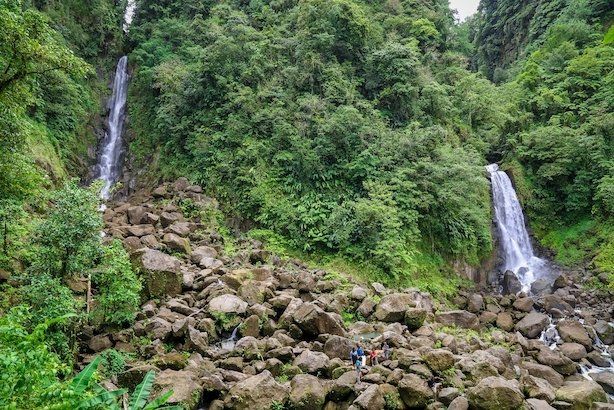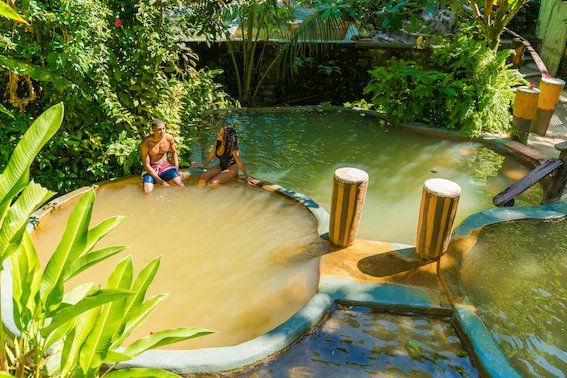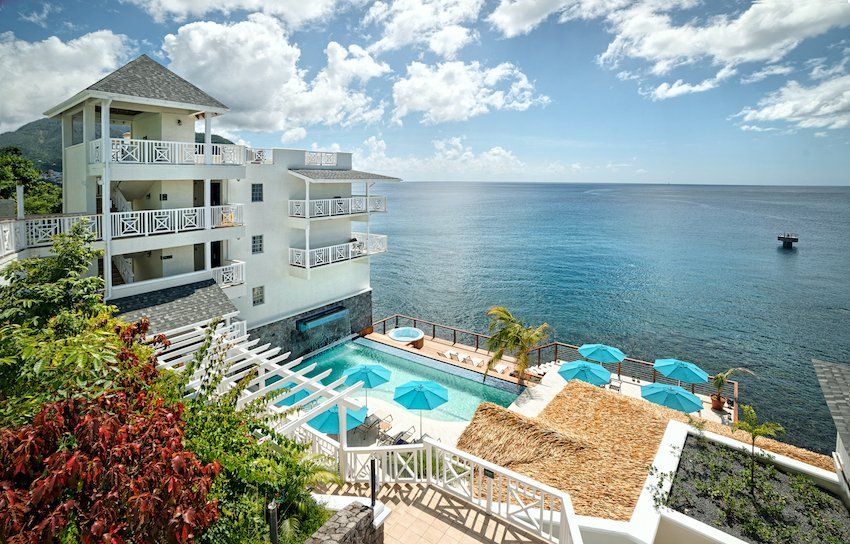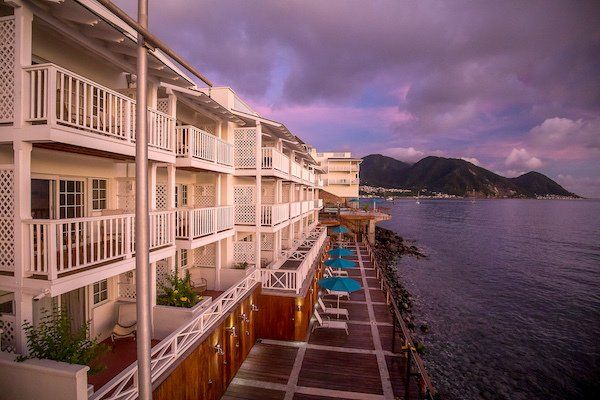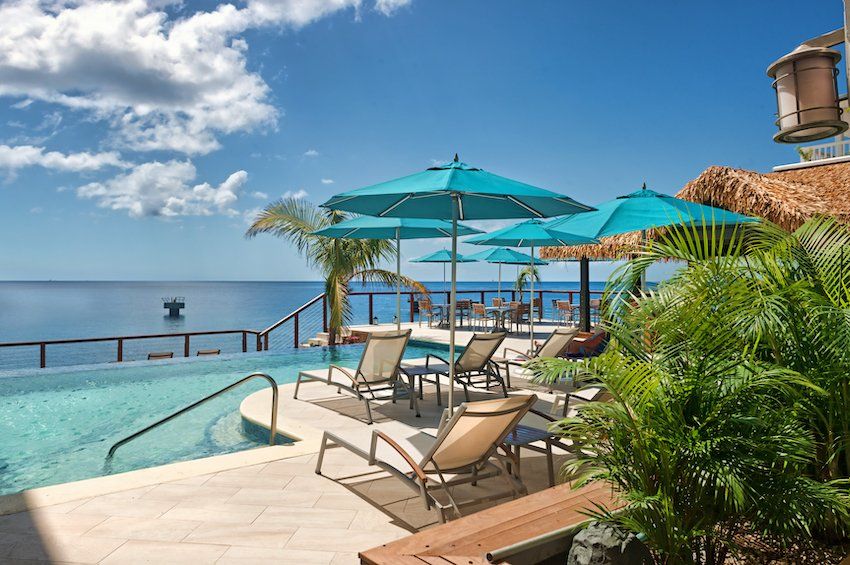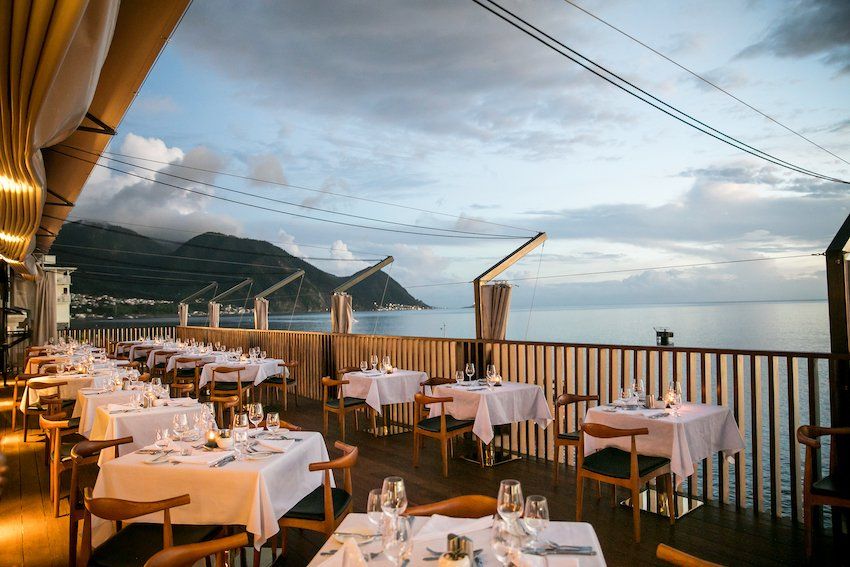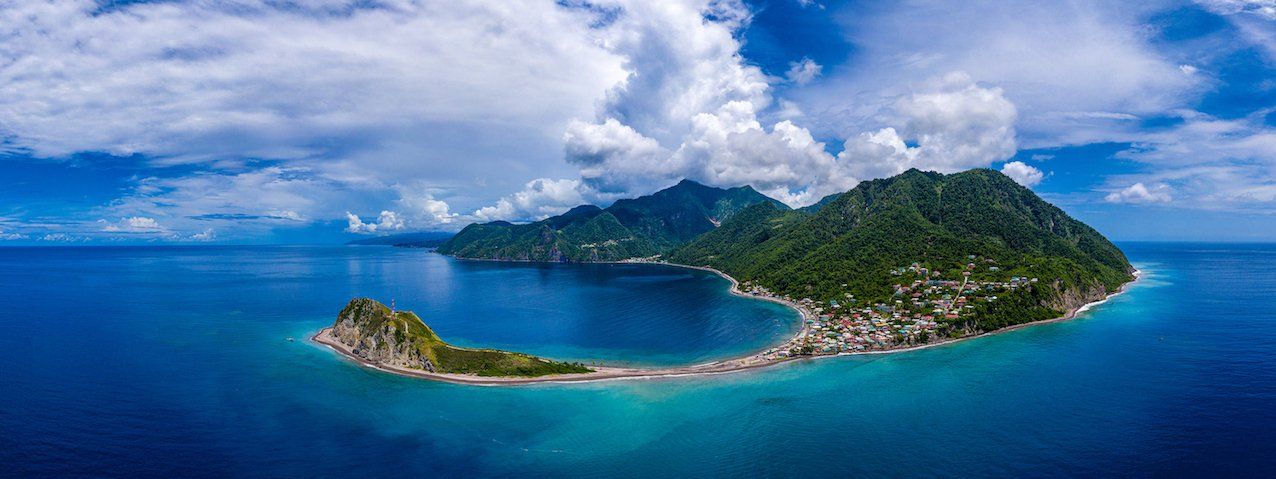
Scotts Head pic credit Discover Dominica Authority
Discovering Dominica - The Nature Island
On a hot and humid runway, we climbed the steps of our little hopper plane to the “nature” island of Dominica, the verdant Leeward Isle, nestled between neighbouring Martinique and Guadeloupe.
Having heard many fascinating things about this untouched pocket of the Caribbean, I was eager to explore its landscape – from volcanic springs and sulphur pools to lush mountainous forests and bountiful reefs, teeming with sea life. As we drove from the airport through jungle and national parks, indeterminate animal sounds of the island’s native creatures drifted through our open windows, falling on our eager ears. It is said the ‘nature island’ is one of the Caribbean’s true gems – with more untouched, protected greenery and far fewer tourists than it’s more established neighbours such as St Lucia or Barbados.
Part of the reason it is less well trodden, is it is trickier to reach than most package destinations. Travellers must take a hopper flight from a neighbouring island (we flew with relative ease from St Lucia). This itself is a stellar travel experience – my children loved the smaller airport, tiny plane and very short flight. InterCaribbean Airways is the main airline for island-hopping and taking one of these journeys by air feels markedly different from boarding any flight from a UK airport.
Dominica operates at a slower pace than the rest of the world and arguably as a result, boasts the highest number of centenarians in the world. With just 70,000 inhabitants, it is a perfect antithesis to the hustle and bustle of busy life back home.
We took a Coolbreeze island tour with the affable Arlington Moise and drank in the scenery, awe-inspiring at every turn. There is a mantra that everything and anything grows on Dominica, due to its nutrient-rich volcanic soil. In fact, the island used to be one of the world’s largest lime producers and the home to Roses Cordial. The limes were mainly grown for military use with the marines, to prevent outbreaks of scurvy on boats.
Much like its sister islands, before 1978 when the island gained its independence, Dominica was ruled by the colonial French, Spanish and English over the years. The national tongue of Creole therefore has been peppered by different influences yet is closest to French – with landmarks for instance such as “Morne Trois Pitons”. It also shares many similarities with “true” creole spoken in Haiti, which originally hailed from Africa.
pic credits Discover Dominica Authority
Travelling around the island we found ourselves at one stage on a deserted beach with a backdrop of breath-taking verdant forest. We even had our own Robinson Crusoe moment as my travel companion pointed out a singular footprint, but we decided we were far safer today and it was most likely a traveller who has just discovered this gem before us, just leaving his own impression in the sand.
The Caribbean has 26 volcanoes and 12 are in Dominica, with a whopping nine active. The island also hosts one of only two boiling lakes in the world – the other one is based in New Zealand. Its capital Roseau’s valley area was also created from volcanoes. Along with these remarkable stats, Dominica boasts the Caribbean’s longest hiking trail, the UNESCO World Heritage Morne Trois Piton National Park, and is home to 365 rivers and dramatic waterfalls. What’s more, springs containing warm volcanic water loaded with iron and sulphur pop up everywhere when driving along, with the tell-tale sign of tainted orange rocks.
Not that we encountered them on our trip, the island is also the last remaining home of 2,000 indigenous Kalinago people. They call Dominica ‘Waitukubuli’—meaning “tall is her body”—to reflect the island’s imposing mountains. Luckily, the new Prime Minister is not interested in mass tourism, so here’s hoping they can live long and prosper.
Indeed the plan for Dominica is to be 100% geo-thermal in the next few years. At present 40% of energy is hydroelectricity and 60% comes from generators. There is a sense of eco-development post recent hurricanes, with for example a new eco-resort being built underground. There are plans to build an aerial car to the top of the wonderful Titou Gorge (home to the Mama and Papa waterfalls) and the roads, which originally were all footpaths, are also remarkably new, boasting solar powered and wind-generated lighting.
Driving about, you get the sense the island is revving itself up in preparation for its brand-new daily flight route from Miami. Yet we were assured by different island patrons that it’s President and Prime Minister (Dominica has both) have one of the strictest policies on touristic development in the region and hence one of the largest filing cabinets full of rejected hotel applications. This definitely was reassuring to hear, for as we discovered the magical spots of the island, where travellers were few and far between, you found yourself hoping it would stay this way for a very long time.
How to get there
You can reach Dominica by air via Canefield or Douglas-Charles Airport, or the by ferry from neighbouring islands. American Airlines also has daily direct flights from Miami.
InterCaribbean Airways provides a reliable schedule of daily flights from the neighbouring islands of Barbados, St Lucia and Antigua which connect seamlessly with international flights on British Airways and Virgin Atlantic from London.
Fact Box
Return flights from St Lucia on InterCaribbean Airways cost around US$300 per person including a checked bag and hand luggage.
Telephone: +1 (649)-946-4999
Email: customerservice@interCaribbean.com
Website: https://www.intercaribbean.com/
Where to stay
We stayed at Fort Young, a decent four-star oceanfront hotel in the island’s capital, Roseau. While the hotel first opened in 1964, the land upon which it sits dates back to 1699. Having evolved from a military fort to a central police station and, presently, a hotel. A full-scale refurbishment of the property is underway and will see an additional 60 rooms added to the current inventory of 40. A new spa and a gym were added earlier this year. The hotel entrance will also be moved to a grander position at the top of the property which should make arrival to the hotel feel a little less industrial than its current sea level reception.
The hotel benefits from top notch cuisine in its Palisades restaurant and is close to Dominica’s Botanical Gardens, Boiling Lake, Morne Trois Pitons National Park, natural thermal spas and scenic plateaus.
Fact box
Rooms can be booked from £200 per night based on double occupancy in an Oceanfront room.
Address: Victoria Street, Roseau, Dominica, Caribbean West Indies
Phone: +1 767 448 5000 or UK tollfree: 0800 0291 547
Email: info@fortyounghotel.com
Website: https://www.fortyounghotel.com/dominica/
Guests wanting another level of luxury should stay at exclusive eco-luxury resort, Secret Bay – an in-the-know boutique hotel, which has won Travel + Leisure’s Best Hotel in the Caribbean twice in the last three years. The hotel is located in verdant rainforest and accommodation is made up of individual treehouse-style villas set on stilts amidst the canopy. To get about, golf buggies arrive at the drop of a hat, ferrying guests to and from their luxury pads. The villas are skilfully crafted in sustainable tropical hard wood, with bespoke fittings. Breakfast is prepared every morning by a villa host and includes organic eggs, organic fruit, homemade granola, natural yoghurt and mouth-watering sour sop (a local fruit) and watermelon juices.
The resort’s no-menu concept Zing Zing restaurant has a sustainable approach – its motto is ‘from earth to table’. Seafood, including prime lobster, takes pride of place in the dishes prepared by the expert culinary team – to be expected from the first luxury hotel on the island. Restaurant Supervisor Sheldon proudly helps guests choose from the ever-changing dishes on offer (no two days are ever the same) and a new chef’s garden is to open soon, with bush teas being added to the menu, using ingredients foraged from the forest.
Secret Bay also has a small semi-outdoor therapy suite called the Gommier Spa overlooking the ocean. The hotel’s new wellness consultant from Switzerland is helping relaunch its spa concept with ‘Micro-Spas’ which will see different spa experiences dotted over the resort. The resort also aims to showcase the sea to guests, with its own water sports and leisure boats, plus an inlet marina.
Rates start at £742 per night based on double occupancy in a Ylang Ylang villa including breakfast. Visit the website
Leila Stocker 2022 See Leila's Bio here


